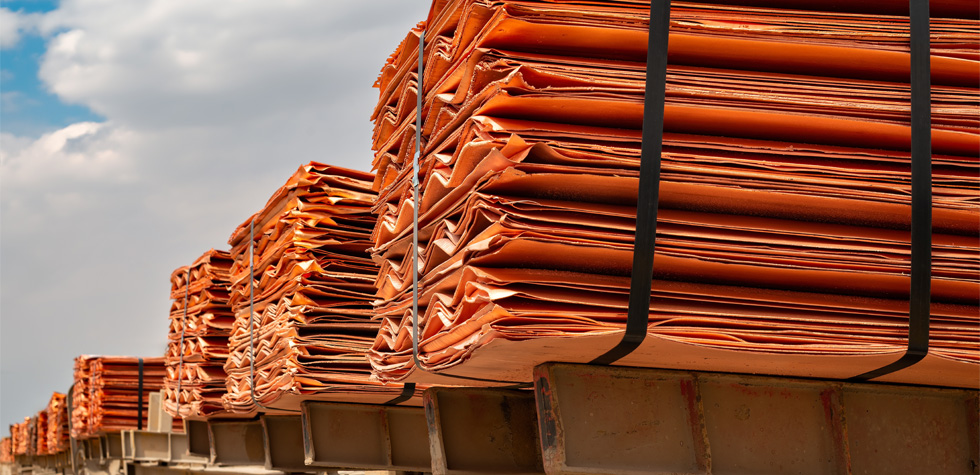How copper shortages threaten the energy transition
Our electrical infrastructure is built on copper, placing this metal at the core of the energy transition. But sluggish supply could compromise ambitions to decarbonize the energy sector.
The metal of electrification
Copper – highly electrically conductive and relatively affordable – is known as ‘the metal of electrification’. It has been used in wiring for 200 years, but today it is also used in the cables, motors, batteries, and electronic components necessary for the energy transition. From EV charging infrastructure to grid-scale energy storage, the future of energy will be built on copper.
The energy transition is expected to drive up demand for copper dramatically in the coming years. Demand could double to 50 million metric tons by 2035, S&P Global forecast, with strongest demand from the US, China, Europe, and India. This would be no cause for concern – except S&P Global also predict that copper supply will be unable to keep up with demand from as early as 2025. This shortage could even threaten international security amid a global scramble for the precious resource.
Demand outstripping supply could drive up the cost of electrification, slowing the energy transition in the crucial years when it must proceed at pace to meet agreed climate goals.
Copper in a quandary
This is not merely a symptom of soaring demand – copper supply growth has been sluggish in recent years. According to the International Copper Study Group, global mined copper output was 21.8 million tons in 2022, representing an increase of just 1 million tons over three years.
This growth looks unlikely to strengthen in the future. Goldman Sachs research found that regulatory approvals for new copper mines are on a downward trend, having fallen to the lowest level in 15 years. This is particularly concerning, given mines can take 10 to 20 years to approve and develop – even if this trend was reversed tomorrow, a slower period of growth for copper mining is already being ‘built in’.
S&P Global blames a focus on short-term returns in the industry for underinvestment in new copper extraction and exploration. The copper industry also faces pressures from many angles: the need to decarbonize in itself; political instability in many countries in which mines are located; and reputational damage from its history of safety and environmental failures, such as the devastating collapse of a dam at the Córrego de Feijão mine in 2019. The industry is now under greater scrutiny from regulators and community groups, with some operating at lower staff levels and slowing down operations amid local protests.

What will it take?
There is no simple solution to the looming copper shortage. Adoption of emerging technologies can help close the supply gap somewhat – in a recent report, McKinsey points to coarse particle recovery, sulfide leaching, and process optimization with AI as valuable tools for maximizing copper extraction from existing operations. And, as with all commodities, there is an increasing push towards circularity – but even with recycling (‘aboveground mining’) accounted for, the International Copper Association estimates that supply will fall 1.7 per cent short of demand by the middle of the next decade.
Ultimately, only by opening and expanding enough copper mines can supply keep up with soaring demand. S&P Global estimates demand could be met by opening three ‘tier-one’ mines (each with annual capacity of 300,000 metric tons) every year for the next 29 years, which would represent a historic expansion for the industry, coming in at a cost over $500bn.
Unprecedented? Yes – but so is much of the energy transition.






